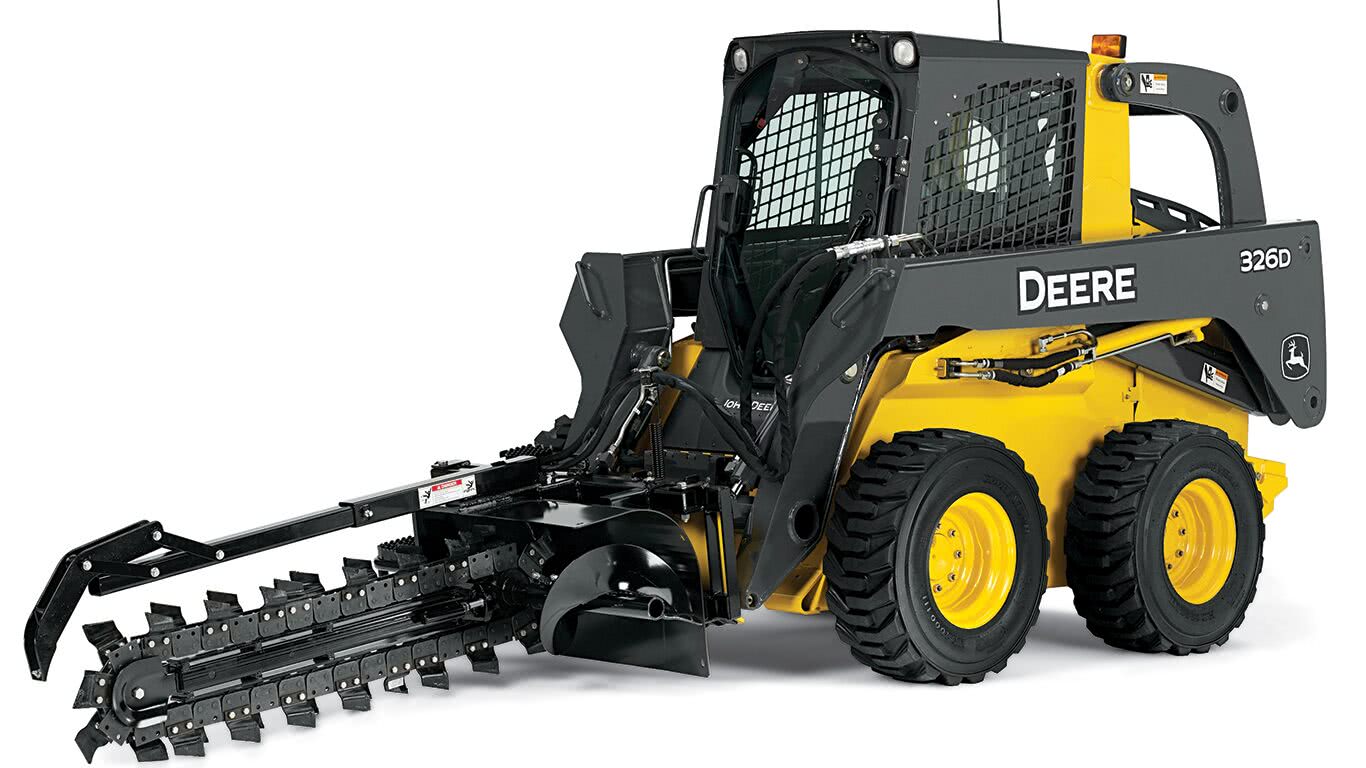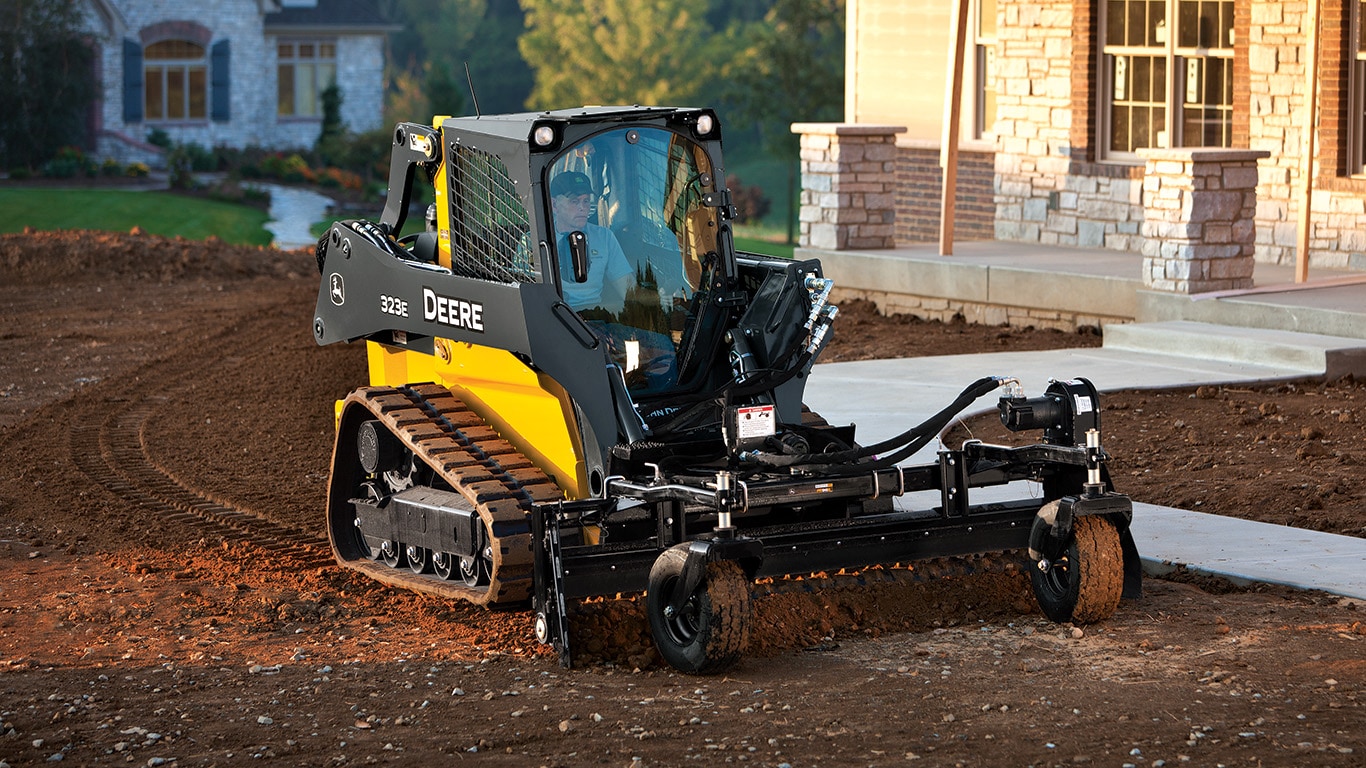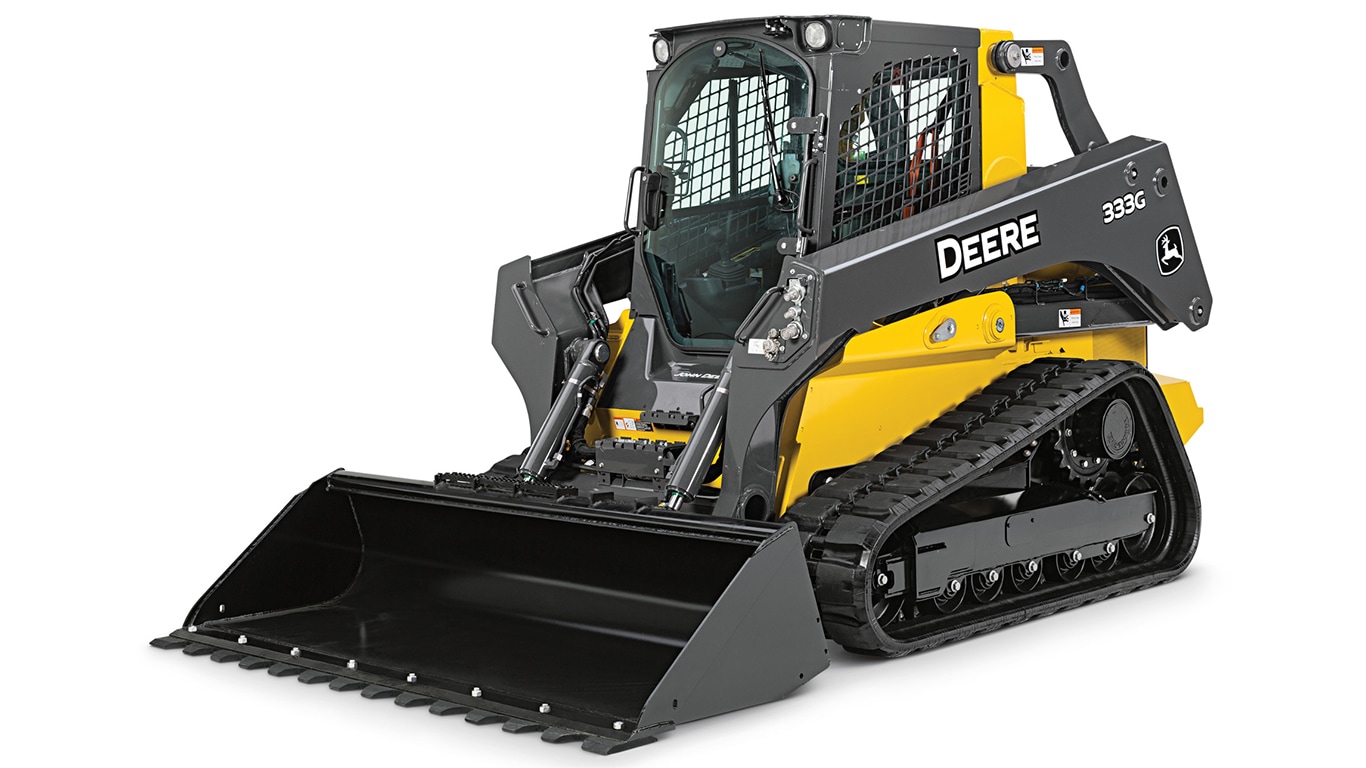Unlocking Power: Essential Construction Attachments For Modern Builds
In the dynamic world of construction, where efficiency, precision, and safety are paramount, the role of specialized equipment cannot be overstated. Among the most crucial components that empower heavy machinery to perform a myriad of tasks are construction attachments. These versatile tools transform standard excavators, skid steers, loaders, and other machines into multi-functional workhorses, dramatically expanding their capabilities and, in turn, the productivity of an entire project. From the initial groundbreaking to the final touches, the right attachments are not just accessories; they are indispensable assets that drive progress, reduce labor costs, and accelerate project timelines.
Understanding the vast array of construction attachments available and knowing how to select the most appropriate ones for specific tasks is fundamental for any construction executive, project manager, or contractor aiming to optimize operations. As Construction Dive provides news and analysis for construction industry executives, it becomes clear that staying abreast of technological advancements and strategic equipment choices is key to navigating the complexities of both commercial and residential construction. This article delves into the world of construction attachments, exploring their types, benefits, economic impact, and the future innovations shaping their evolution, ensuring you’re equipped with the knowledge to make informed decisions that impact your bottom line and project success.
Table of Contents
- The Indispensable Role of Construction Attachments
- Types of Construction Attachments: A Comprehensive Overview
- The Economic Impact of Smart Attachment Choices
- Navigating Regulations and Industry Trends
- Innovation and the Future of Construction Attachments
- Selecting the Right Attachments for Your Project
- Maintenance and Longevity: Maximizing Your Investment
- Real-World Applications and Success Stories
The Indispensable Role of Construction Attachments
At the heart of every successful construction project lies efficient machinery. However, the raw power of an excavator or a skid steer is only as useful as the tools it wields. This is where construction attachments come into play, serving as the “hands” and “feet” of heavy equipment, enabling them to perform a vast array of specialized tasks. Without these versatile tools, contractors would be forced to invest in multiple single-purpose machines, leading to exorbitant costs, increased logistical complexities, and larger carbon footprints.
The primary benefit of utilizing a diverse range of construction attachments is the unparalleled versatility they offer. A single base machine, like an excavator, can transform from a digging tool into a demolition expert, a land-clearing machine, or even a precise material handler, simply by swapping out its attachment. This adaptability not only streamlines operations but also significantly reduces the need for a large fleet of specialized equipment, optimizing capital expenditure and storage space. For contractors looking to maximize their return on investment, the ability to adapt existing machinery to new challenges is invaluable.
Beyond versatility, attachments are critical for enhancing productivity and efficiency on the job site. Tasks that once required extensive manual labor or multiple pieces of equipment can now be completed faster and with greater precision by a single machine equipped with the correct attachment. This translates directly into reduced project timelines, lower labor costs, and improved safety, as fewer personnel are exposed to hazardous conditions. In an industry where every minute and every dollar counts, the strategic deployment of construction attachments is a competitive advantage.
Types of Construction Attachments: A Comprehensive Overview
The market for construction attachments is vast and continually evolving, with innovations regularly introducing new tools designed to tackle specific challenges. While a comprehensive list would be exhaustive, understanding the primary categories and their common applications is essential for effective project planning.
Excavator Attachments: Digging Deeper
Excavators are perhaps the most versatile machines on a construction site, and their adaptability is largely due to the wide array of attachments they can utilize. These attachments transform excavators from mere digging machines into multi-functional powerhouses:
- Buckets: The most common attachment, available in various sizes and types (e.g., digging, grading, trenching, rock buckets) for different soil conditions and tasks.
- Hydraulic Breakers (Hammers): Essential for demolition, breaking concrete, asphalt, and rock. They deliver powerful percussive force, making quick work of hard materials.
- Grapples: Used for handling demolition debris, logs, rocks, and other bulky materials. They come in various configurations, such as demolition grapples, sorting grapples, and log grapples.
- Augers: Designed for drilling holes for poles, foundations, or landscaping. They come with different bit sizes and types for various soil conditions.
- Shears: Specialized for cutting steel, rebar, and other metal structures in demolition or recycling operations.
- Compactors: Plate compactors attached to excavators can compact soil in trenches or foundations, improving ground stability.
Skid Steer Attachments: Versatility Unleashed
Skid steer loaders are known for their compact size and maneuverability, making them ideal for tight spaces. Their quick-attach system allows for rapid swapping of attachments, making them incredibly versatile:
- Buckets: Similar to excavators, skid steers use buckets for digging, loading, and carrying materials.
- Pallet Forks: Transform a skid steer into a forklift, ideal for moving palletized materials around a job site.
- Brooms/Sweepers: Used for site cleanup, sweeping debris, dirt, and snow.
- Trenchers: For digging narrow trenches for utility lines, irrigation, or drainage.
- Brush Cutters/Mowers: For clearing overgrown vegetation, brush, and small trees, especially useful in land clearing and landscaping.
- Snow Blowers/Plows: Essential for snow removal in colder climates, clearing paths and parking lots.
Loader Attachments: Lifting and Moving
Wheel loaders and backhoe loaders are primarily used for loading, carrying, and moving materials. Their attachments enhance these core functions and add new capabilities:
- Buckets: Large capacity buckets for loading trucks, moving aggregates, and general earthmoving.
- Grapples: For handling bulky or irregularly shaped materials like logs, waste, or demolition debris.
- Bale Spears: In agricultural construction or landscaping, used for handling large hay bales or similar materials.
- Snow Pushers: Large blades designed to push and clear significant amounts of snow quickly.
Specialized Attachments: Beyond the Basics
Beyond the common categories, there are numerous specialized construction attachments designed for niche applications, often addressing specific industry needs or unique project challenges. These include:
- Pile Drivers: For driving piles into the ground to create foundations.
- Asphalt Planers/Cold Planers: Used for removing layers of asphalt or concrete for road repair.
- Rock Saws: For precise cutting of rock or concrete, often used in trenching through hard ground.
- Tree Shears/Mulchers: For efficient land clearing, cutting down trees, and mulching vegetation. An excellent example is the “Xtreme duty tree boom manufactured in the USA by Construction Attachments, Inc,” which “is designed for use on skid steer loaders and tractor loaders,” enabling operators to efficiently handle trees. “This specialty attachment enables the operator to” extend reach and manipulate trees with precision, highlighting how specific attachments solve unique problems.
The Economic Impact of Smart Attachment Choices
The decision to invest in the right construction attachments carries significant economic implications for any project or company. In an industry where “construction input prices increased at a rapid pace for the third consecutive month in March and have now risen at a 9.7% annualized rate through the first quarter of 2025,” as noted by industry experts, cost control and efficiency are paramount. Furthermore, “overall construction input prices are 0.1% higher than a year ago, while nonresidential construction input prices are 0.2% higher,” indicating a persistent upward trend in operational costs.
By maximizing the utility of existing machinery through versatile attachments, companies can avoid the substantial capital expenditure associated with purchasing dedicated single-purpose machines. This not only frees up capital for other investments but also reduces depreciation costs and insurance premiums. Moreover, the enhanced efficiency offered by attachments directly translates into reduced labor hours and faster project completion, both of which are critical for profitability. For instance, a single excavator with a hydraulic breaker can accomplish demolition tasks much faster and with fewer personnel than traditional methods, leading to significant savings.
The ability to take on a wider variety of projects without expanding the core fleet also makes a contractor more competitive. If a project requires specialized land clearing or precise drilling, having the right construction attachments on hand means the contractor can bid on and execute the work without needing to rent or buy additional expensive machinery. This flexibility is particularly valuable in a fluctuating market, as “owners and developers of commercial construction projects may hesitate to move forward with new work after President Donald Trump levied fresh tariffs on more than 180” types of goods, creating economic uncertainty. Adaptability, fueled by smart attachment choices, helps mitigate such risks.
Navigating Regulations and Industry Trends
The construction industry is heavily influenced by regulations, economic policies, and evolving market demands. These factors directly impact the types of construction attachments that are most in demand and the innovations that emerge. For example, “winning construction sectors under Trump thanks to new White House policies aimed at limiting regulations and easing approvals, contractors expect a surge in activity” in certain areas. Such surges can increase demand for specific attachments, like those used in infrastructure development or large-scale commercial builds.
Safety regulations are another critical aspect. Attachments must comply with stringent safety standards to protect operators and ground personnel. Manufacturers continually innovate to integrate advanced safety features, such as improved visibility, automated locking mechanisms, and telematics for remote monitoring. Environmental regulations also play a role, driving the demand for attachments that promote sustainability, such as those that reduce waste, minimize ground disturbance, or enable efficient recycling of materials on site.
Furthermore, industry trends like urbanization and the development of mega-projects influence attachment design. The “Wilhelm top out $4.3B Indianapolis hospital” project, which “will feature 864 inpatient rooms and 50 operating rooms,” and “has ballooned in cost from the original” estimate, exemplifies the scale and complexity of modern construction. Such projects demand high-capacity, durable, and precise attachments that can handle massive volumes of material and complex structural work efficiently. Similarly, the “Intel’s Ohio One campus in New Albany, Ohio,” where “the tech giant is investing $28 billion in the project,” showcases the need for cutting-edge attachments capable of supporting high-tech construction demands.
Innovation and the Future of Construction Attachments
The future of construction attachments is closely tied to broader technological advancements in the construction industry. Automation, robotics, and artificial intelligence are poised to revolutionize how attachments are designed, operated, and maintained. We are already seeing the emergence of smart attachments equipped with sensors that provide real-time data on performance, wear, and even environmental conditions.
- Automation and Robotics: Fully automated attachments capable of performing repetitive tasks with minimal human intervention will become more common, increasing precision and safety.
- Telematics and IoT: Integrated telematics systems will allow for remote monitoring of attachment health, usage patterns, and location, enabling predictive maintenance and optimizing fleet management.
- Advanced Materials: The use of lighter, stronger, and more durable materials will extend the lifespan of attachments and improve their performance in extreme conditions.
- Electrification: As the industry moves towards greener solutions, electric-powered attachments and those compatible with electric heavy equipment will gain prominence, reducing emissions and noise pollution.
- Modular and Customizable Designs: Future attachments may feature more modular designs, allowing for easier customization and adaptation to specific project needs, further enhancing versatility.
These innovations promise to make construction attachments even more efficient, safer, and environmentally friendly, contributing to a more sustainable and productive construction industry. The drive for continuous improvement is highlighted by initiatives like “Construction Dive’s fifth annual construction champions program,” where “editors examined more than 300 entries, scrutinizing each nominee’s impact” on the industry, showcasing the commitment to recognizing and fostering innovation.
Selecting the Right Attachments for Your Project
Choosing the correct construction attachments is a critical decision that impacts project efficiency, safety, and budget. It requires a thorough understanding of the project’s scope, the capabilities of your base machines, and the specific tasks at hand. Here are key considerations:
- Project Requirements: Clearly define the tasks that need to be performed. Is it demolition, excavation, land clearing, material handling, or a combination? Each task has optimal attachments.
- Machine Compatibility: Ensure the attachment is compatible with your existing heavy equipment in terms of hydraulic flow, operating weight, and mounting system. Always check manufacturer specifications.
- Material Type: The type of material being worked with (e.g., rock, soil, concrete, wood) will dictate the strength and design of the attachment required.
- Site Conditions: Consider the terrain, space constraints, and environmental factors. For example, a compact skid steer with a specialized attachment might be ideal for tight urban sites.
- Budget: Balance the cost of the attachment with its expected return on investment. Sometimes, renting a specialized attachment for a short-term project is more economical than purchasing.
- Operator Skill: Some advanced attachments require specialized training. Ensure your operators are proficient or can be trained.
- Manufacturer Reputation and Support: Choose attachments from reputable manufacturers known for quality, durability, and excellent after-sales support.
Maintenance and Longevity: Maximizing Your Investment
Just like any piece of heavy machinery, construction attachments require regular maintenance to ensure optimal performance, extend their lifespan, and prevent costly downtime. A proactive maintenance schedule is crucial for maximizing your investment.
- Regular Inspection: Before and after each use, inspect attachments for signs of wear, damage, cracks, or loose components. Pay close attention to pins, bushings, hoses, and welds.
- Lubrication: Follow the manufacturer’s guidelines for greasing all moving parts. Proper lubrication reduces friction and prevents premature wear.
- Cleaning: Keep attachments clean, especially after working with corrosive materials or in muddy conditions. Dirt and debris can hide damage and accelerate wear.
- Component Replacement: Replace worn-out parts like teeth, cutting edges, and hydraulic hoses promptly. Delaying replacements can lead to more significant damage to the attachment or even the base machine.
- Proper Storage: Store attachments in a clean, dry area when not in use. Protect them from the elements to prevent rust and corrosion.
- Operator Training: Ensure operators are trained on the correct use of each attachment to prevent misuse and unnecessary wear.
Adhering to these maintenance practices not only prolongs the life of your attachments but also contributes to overall site safety and operational efficiency. Neglecting maintenance can lead to unexpected breakdowns, project delays, and increased repair costs, eroding the economic benefits that attachments are designed to provide.
Real-World Applications and Success Stories
The impact of construction attachments is best understood through their real-world application in diverse projects. From massive infrastructure developments to intricate residential builds, attachments are continuously proving their worth.
- Large-Scale Infrastructure: On projects like the Intel Ohio One campus, a “$28 billion investment,” specialized attachments for earthmoving, concrete work, and utility installation are indispensable. The sheer scale demands efficient, high-capacity tools to keep the project on schedule.
- Demolition and Recycling: Hydraulic breakers and shears are fundamental in urban demolition projects, allowing for controlled dismantling and efficient separation of materials for recycling. This not only speeds up the process but also aligns with sustainability goals.
- Land Clearing and Forestry: Attachments like mulchers and tree shears, such as the “Xtreme duty tree boom manufactured in the USA by Construction Attachments, Inc,” revolutionize land clearing, making it faster and safer than manual methods. “Designed for use on skid steer loaders and tractor loaders,” this “specialty attachment enables the operator to” clear large areas efficiently, preparing sites for construction or agriculture.
- Residential and Commercial Builds: For smaller-scale projects, the versatility of skid steer attachments is invaluable. Pallet forks move materials, trenchers lay utility lines, and brooms keep sites clean, all contributing to a streamlined workflow.
These examples underscore how the strategic deployment of the right construction attachments is not just about having the tools, but about empowering machines to perform complex tasks with precision, speed, and safety, ultimately driving project success and profitability in an increasingly competitive industry.
Conclusion
The world of construction attachments is far more than a collection of add-ons; it represents the very essence of adaptability, efficiency, and innovation in the modern construction industry. By transforming single-purpose machines into versatile workhorses, these tools empower contractors to tackle a wider array of projects, optimize resource allocation, and significantly enhance productivity. From navigating fluctuating “construction input prices” to meeting the demands of large-scale developments, the strategic selection and meticulous maintenance of attachments are critical for financial health and operational excellence.
As technology continues to advance, the capabilities of construction attachments will only grow, promising a future of even greater automation, precision, and sustainability on the job site. For construction executives and project managers, staying informed about these developments and making wise investment choices in attachments is not merely an option, but a necessity for staying competitive and profitable. We encourage you to explore the diverse range of attachments available and consider how they can unlock new levels of efficiency and capability for your next project. Share your experiences with specific attachments in the comments below, or if you’re looking to delve deeper into optimizing your construction operations, explore our other articles on equipment management and industry best practices.

Construction Attachments | Worksite Pro Attachments | John Deere

Construction Attachments | John Deere

Compact Construction Attachments | John Deere CA